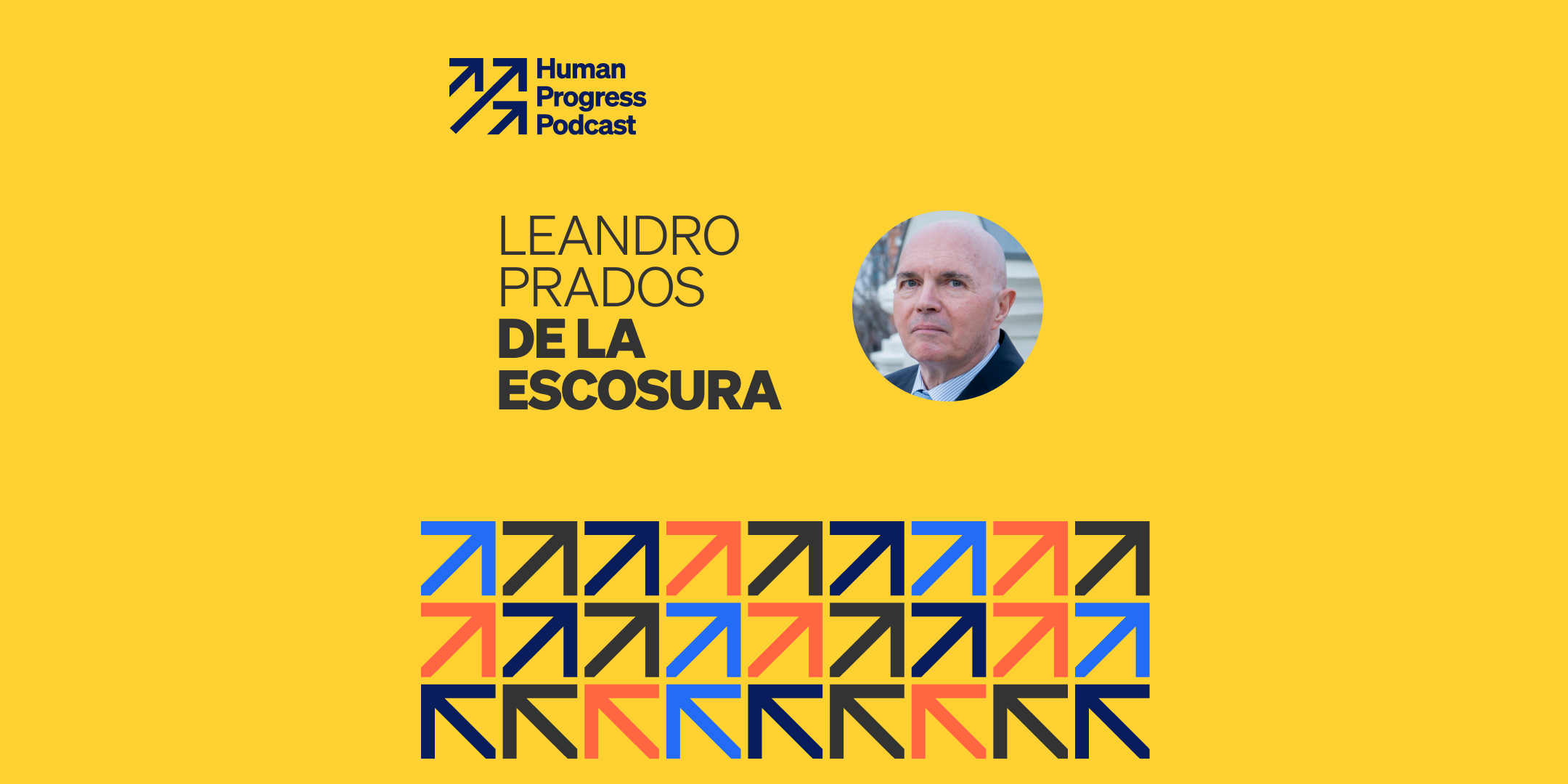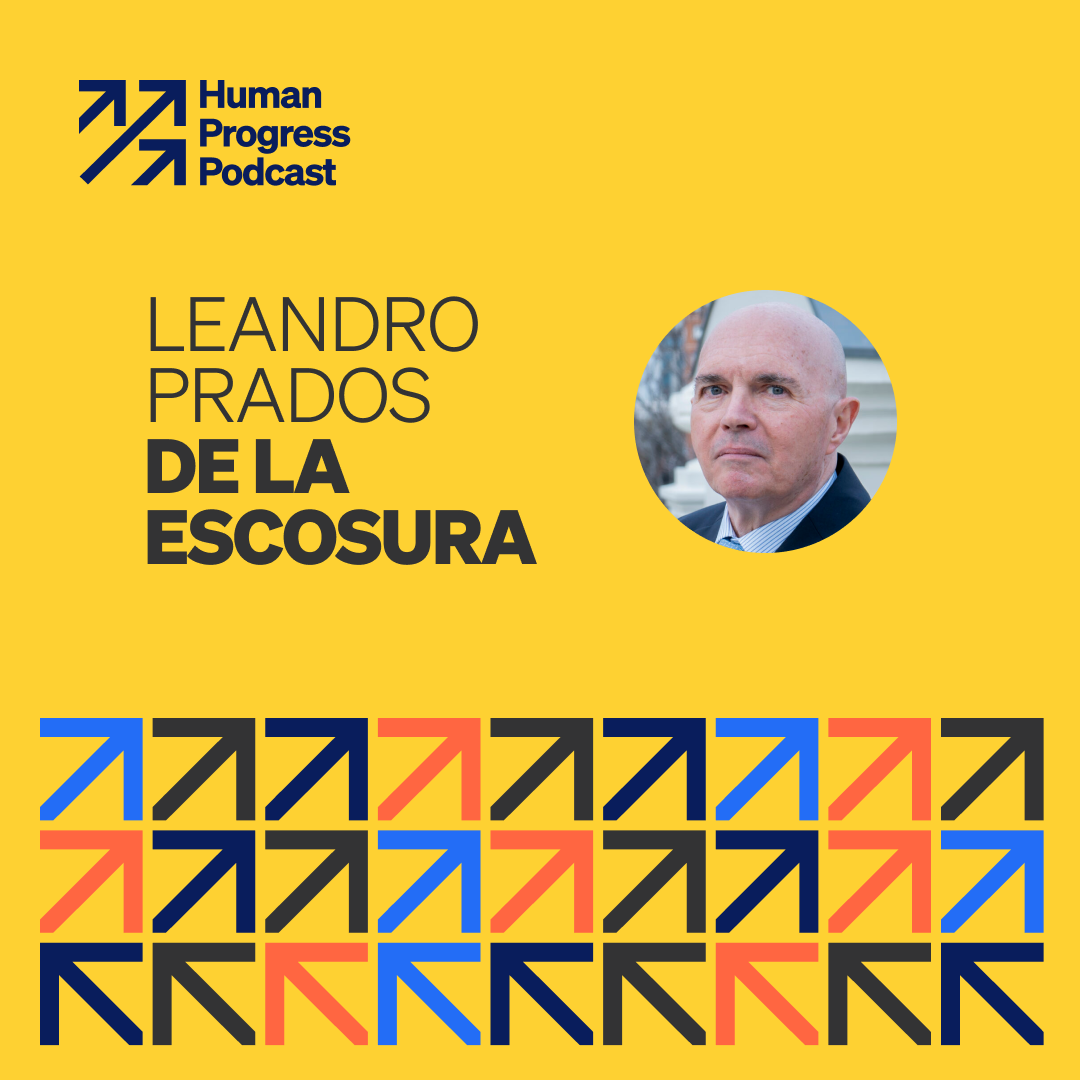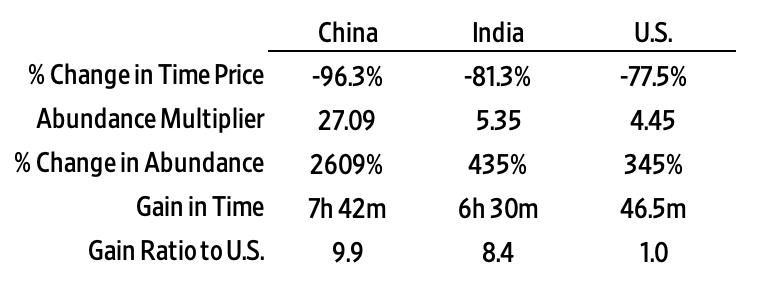Listen to the podcast or read the full transcript here.
Let’s discuss your latest book, Human Development and the Path to Freedom.
I have spent many years working on economic performance in the long run, and while I don’t have anything against GDP, I was always uneasy with the idea of using GDP per head as a shortcut for wellbeing. GDP is a good indicator of output but a very deficient indicator of wellbeing.
Most economists say, “This is true, but it’s highly correlated with non-economic dimensions of wellbeing.” There is also a tendency to produce a dashboard of indicators, basically GDP and some additional measures that create a more nuanced picture.
I was unhappy with that. Then I realized that, since the beginning of modern national accounts in the 1950s, there have been attempts to produce alternative measures. More than 30 years ago, the United Nations Development Programme produced the Human Development Index. I was very interested, but at the same time, I was frustrated when I saw that countries with no freedom at all ranked very highly in the index.
For example, in the first report in 1990, they had a retrospect going back to 1975, and I found that Spain, under Franco’s dictatorship, ranked very highly in human development. How come? It wasn’t satisfactory to rank a nasty dictatorship so highly. And then I read the literature accompanying the report and found this very candid assertion: “The purpose of human development is to increase people’s range of choices. If they are not free to make those choices, the entire process becomes a mockery.”
This is an important philosophical point: Human development is not just about living longer or having a higher material standard of living. You can get that in a high-security prison in Norway. Choosing between alternative ways of life is what makes the difference.
To make a long story short, they have tried time and again to introduce freedom, but they never managed to do so because of strong political opposition from country members of the program. So, as an independent scholar, I thought, “Look, nobody is going to read it, but I have the freedom to introduce the freedom dimension.”
Tell me about what you found.
Perhaps what makes sense is to compare what I found to what you would get on the basis of per capita income. If you look at the average increase from 1870 to 2020, the growth in income and wellbeing is very similar.
But if you look closer, you realize there are large differences across different periods. During first globalization before 1913 and between 1970 and 2000, they are relatively close. During the last two decades, the difference is huge in favor of material living standards measured by per capita income. The first part of the 20th century is just the opposite.
What next? Well, try to provide an explanation.
I went in two steps. One was asking, “Why has this growth in human wellbeing happened? What is the intuition?” The intuition is that if you get richer, you’re going to become better fed, healthier, better educated, and freer. But you can also have different levels of wellbeing at the same income level, and the most important finding from a historical perspective is that at any point of income, you have higher wellbeing today than in the past.
If you compare 1870 to 1913, you see that for most of the income levels, you get the same association between health and income, but at high levels of income, you get higher levels of health. Improvements in health techniques and medical knowledge were restricted to the most advanced countries. But if you look at the 1950s, at any income level, you get higher levels of health than in 1913 or 1870. You also find this for education and freedom. If you move to 2000, there is another upward shift.
Of course, there are reversals. There have been four moments in time in which the progression, the positive progression of human development stopped or declined. One was the Great Depression. The second one was during Mao’s Great Leap Forward. Then there were the oil shocks in the early ’70s, but the most damaging one has been COVID. COVID is the first period in which wellbeing measured in terms of augmented human development has declined
However, over the long run, for any income level, whether you are rich or poor, nowadays you have higher wellbeing than in the past.
Those findings are fascinating. What would you say is the biggest implication of your work?
The first thing is that wellbeing, broadly defined, has expanded worldwide more steadily than per capita income.
Secondly, the phases in which we conventionally associate improvements in wellbeing are not necessarily the same as those in which actual wellbeing improved. For instance, there was an important improvement in the so-called interwar period, even though economic growth stagnated. In 20th-century India, before independence, there was a stagnation in real average income but a remarkable improvement in health. This was because of the discovery of the germ theory of disease, which brought simple hygienic practices like washing your hands before eating and not sleeping near animals.
We also tend to forget that the association between wellbeing and income is not fixed. There are movements along the function: if you are richer, other things being equal, you’re going to be healthier, more educated, and freer. But this is not the whole story. There are also upward and downward shifts.
For instance, you could say that in terms of freedom in 2020, we are worse off than we were 20 years ago. This doesn’t mean that people were richer 20 years ago—we’re richer now—but at the same income level, 20 years ago, people were freer than we are today.
So, it’s a nuanced picture. Overall, things are improving, but there are also worrying declines in freedom.
Exactly.
Can you talk about inequality?
In 1870, in the case of wellbeing, inequality was high, and it increased up to the end of the century, then went down. Then, because of World War I, it increased again. But from the late 1920s to the present, with the exception of a reversal because of World War II, there has been a steady decline in inequality of wellbeing.
In the case of per capita income, inequality increased until the end of the 20th century, around 1980, and only began declining after 1990.
Here, I’m referring to relative inequality. If we increase wealth by 10 percent everywhere, inequality in relative terms doesn’t change. Some people are a bit pickier and think, “If my income increases 10 percent and my income is 100, I get 110. If your income is 1000, you now get 1100.” This is absolute inequality.
Relative inequality in per capita income increased until 1980 and has declined since 1990. But absolute inequality in per capita income, the distance between rich and poor, continues growing.
Absolute inequality in wellbeing has declined since 1960. Today, it is similar to what you would find in 1938, 1913, or 1900, but higher than in 1870.
It’s also important to look at what happens to different parts of the distribution. Who are the winners and losers? Broadly speaking, the middle class of the world gained the most, and the lower classes and those at the top won relatively less. If you look at absolute gains, those who were at a higher level of wellbeing got more. But that changes for different dimensions. Those at the bottom, for example, were the main winners in terms of education, while those in the middle were the main winners in terms of health.
I know that your current focus is on freedom. Could you tell me a little bit about that?
I became interested in human development after reading Amartya Sen, who emphasizes what Isaiah Berlin would call positive freedom. Freedom to. But he also emphasizes negative freedom, the absence of coercion and interference. And I think this is interesting because many people think there is a trade-off between negative and positive freedom.
At the end of the day, everybody wants to have negative freedom, but there are those who think negative freedom has nothing to do with income, that would be Hayek, and those who think negative freedom can only be reached as a second stage once you provide for those who don’t have access. For some, positive freedom is a socialist lie to reduce negative freedom. For others, they are two faces of the same coin.
As an economic historian, I find this is an interesting topic for research. If you look at the world, and you can see this in the Human Freedom Index that Cato publishes, you see the countries at the top in terms of negative freedom are also at the top in terms of positive freedom. For instance, Denmark is at the top of the list in terms of economic freedom, but also in terms of education and health.
My question was, well, maybe this trade-off is only a short-run phenomenon. Maybe if you look at the long run, the trade-off doesn’t hold or only holds for a certain period. So why not construct two alternative sets of estimates, one for positive freedom and the other for negative freedom? And this is what I’m trying to do now.
My main discrepancy with the Fraser Institute economic freedom index is that I don’t take into account the size of government. I know this is a contentious issue. People say, “the larger the government, the less room for private initiative.” At a point in time, this is true. And if you look at similarly developed countries, this is true.
But if you take a cross-section at a point in time, you can see that there are countries in which the size of government is much, much smaller, that are not necessarily freer, in terms of absence of coercion and interference, than countries with larger governments. Look at, for instance, Latin American and Sub-Saharan African countries. Think of Somalia. Or think of my own country under Franco. It was a right-wing, but, in many aspects, very socialist dictatorship in which the government was everywhere. But the size of government was very small.
In 1980, do you know what percentage the income tax contributed to the revenues of the central government in Spain? Give me a figure. You would say 40 percent?
Sure, 40 percent.
2 percent.
Wow.
Nobody paid income tax. So, there was no redistribution.
My point is that the size of government matters less than the nature of government. Perhaps Denmark would have more economic freedom with a smaller government, but if you compare Denmark to other countries, you can see that even though the Danish government is larger, Denmark’s degree of economic freedom is higher. Why? Because the nature of government action is different. It doesn’t interfere as much as another government that is less intrusive in quantitative terms but more intrusive in qualitative terms.
So, if you are looking at a point in time, it makes sense to say, “mutatis mutandis, if a rich country nowadays has a smaller government, this country is going to be freer.” That is true. But the action of government varies from one case to another.
Get Leandro Prados de la Escosura’s book, Human Development and the Path to Freedom: 1870 to the Present, here.








